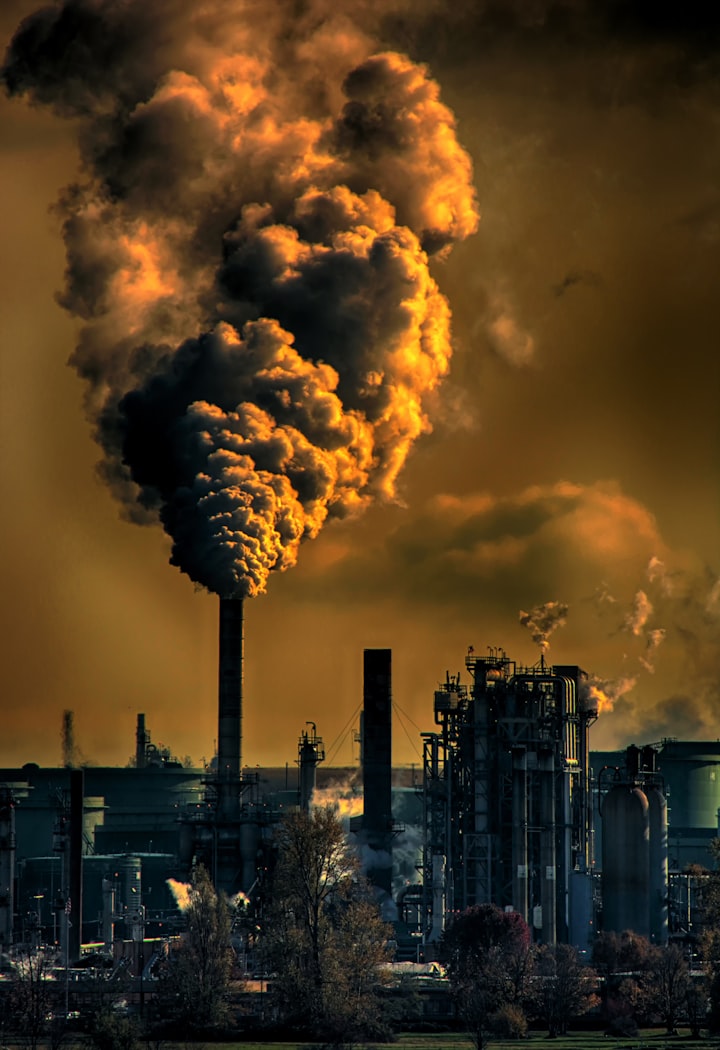Footprints of Change
Trace the interconnected lives of individuals from different corners of the world, showing how their actions and decisions ripple through ecosystems and impact the environment

In the bustling heart of New York City, Maya hurriedly grabbed a disposable coffee cup from the street vendor, rushing to her office. Unbeknownst to her, that cup would find its way into the hands of Alejandro, a young fisherman in a coastal village thousands of miles away.
Alejandro spent his mornings untangling his nets and preparing for the day's catch. His village had once thrived, but now the waters were teeming with plastic debris that choked the fish and polluted their only source of livelihood. As he cast his net into the water, he noticed something glinting amidst the waves - a piece of plastic with a familiar logo.
Meanwhile, in a remote village in India, Priya was meticulously sorting through her recycling bin. She meticulously separated plastic, paper, and glass, aware of the global impact of waste. Little did she know that her actions would contribute to a chain of events felt around the world.
Back in New York, Maya sat in a meeting about a proposed recycling initiative. She remembered the coffee cup and thought about how her daily choices might be connected to far-off places. Inspired by the meeting, she started carrying a reusable cup and spread the word among her colleagues.
The ripple effect continued when Maya's colleague, Raj, decided to do the same. Raj had family in a small town in Kenya, where plastic waste had turned once-vibrant streets into a sea of litter. Inspired by Raj's actions, his family began advocating for better waste management practices in their community.
As Raj's family worked towards change, news of their efforts reached a group of environmental activists in Brazil. Among them was Isabella, a young woman with a deep passion for conservation. She felt a connection to Raj's family's story and decided to organize a global campaign to raise awareness about the impact of individual choices on the environment.
Isabella's campaign gained traction worldwide, touching the lives of people in ways she couldn't have imagined. Students in Australia started cleaning up their local beaches, families in China began reducing their plastic consumption, and communities in Europe initiated tree-planting projects.
Back in Alejandro's village, change was on the horizon. A group of volunteers arrived, armed with knowledge about recycling and sustainable practices. Among them was a young woman named Priya, who had traveled all the way from India to share her expertise. She taught the villagers about proper waste disposal and recycling techniques.
Over time, the village transformed. The once-polluted waters began to clear, and fish returned to their vibrant colors. The sense of hope that had been lost was rekindled, and Alejandro realized that his fate was intertwined with people he had never met.
As the years went by, the interconnectedness of their actions became evident. Maya's choice to use a reusable cup had sparked a series of events that brought positive change to places she had never visited. The choices of individuals like Priya, Raj, and Isabella had shown Alejandro that people all over the world cared about the environment and were working together to make a difference.
In a world often overwhelmed by the enormity of environmental challenges, "Footprints of Change" revealed the power of individual actions and their potential to create a global movement. It underscored the idea that every decision, no matter how small, sends ripples through the world and leaves an imprint on the environment. The story served as a poignant reminder that the fate of our planet is inextricably linked, and that each one of us has the ability to shape its future.
Certainly! Addressing climate change requires a collaborative effort from individuals, families, and governments.
Individuals play a role by adopting sustainable practices in their daily lives, such as reducing energy consumption, using public transport, and consuming less meat. These actions collectively have a significant impact on reducing carbon emissions.
Families can contribute by making eco-friendly choices, such as using energy-efficient appliances, minimizing waste, and supporting renewable energy sources. Educating children about the importance of environmental responsibility can also have a long-lasting effect.
Governments have a crucial responsibility in implementing policies and regulations that promote sustainable practices. This includes investing in renewable energy infrastructure, setting emission reduction targets, and encouraging businesses to adopt eco-friendly practices through incentives or regulations.
Ultimately, it's a combination of individual actions, family efforts, and government initiatives that will help mitigate the effects of climate change and create a more sustainable future for all.





Comments (1)
Great… and yes unity is the key to beginning the stability